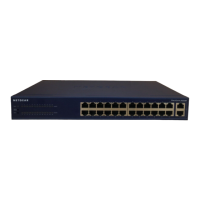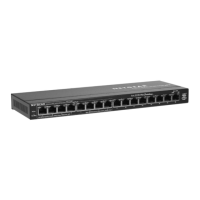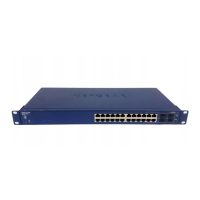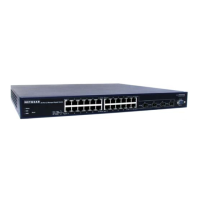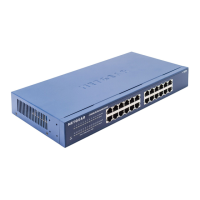Managing Device Security
290
S3300 Smart Managed Pro Switch
• To remove the selected ACL from a port or LAG, click the box directly below the port
or LAG number to clear the selection. A check mark in the box indicates that the ACL
is applied to the interface.
5. Click the Appl
y button.
IP Binding Table
Use the IP Binding Table screen to view or delete the IP ACL bindings.
The following table describes the information d
isplayed in the IP binding table.
Table 97. IP binding table information
Field Description
Interface The interface to which the IP ACL is bound.
Direction Specifies the packet filtering direction for ACL. The only valid direction is Inbound, which
means the IP ACL rules are applied to traffic entering the port.
ACL Type The type of ACL assigned to selected interface and direction.
ACL ID The ACL Number identifying the ACL assigned to selected interface and direction.
Seq No. The Sequence Number signifying the order of specified
ACL relative to other ACLs assigned
to selected interface and direction.
To delete an IP ACL binding:
1. Select Security > AC
L > Advanced > Binding Table.
2. Select the check box
associated with the ACL-to-interface binding to remove.
3. Click the Delete butto
n.
VLAN Binding Table
Use the VLAN binding table screen to associate an ACL with a VLAN. When an ACL is
associated with a VLAN, it is applied to all interfaces that are members of the VLAN.
To configure an ACL-to-VLAN binding:
1. Select Security > AC
L > Advanced > VLAN Binding Table.
2. In
the VLAN ID field, specify a VLAN ID for ACL mapping.
3. In
the Direction field, select In Bound.
The IP ACL rules are applied to traffic entering the port.
4. (Opt
ionally) In the Sequence Number field, specify the sequence number of the access lists.
This sequence number indicates the order of this a
ccess list relative to other access lists
already assigned to this VLAN and direction. A lower number indicates higher
precedence order. If a sequence number is already in use for this VLAN and direction, the
specified access list replaces the currently attached access list using that sequence
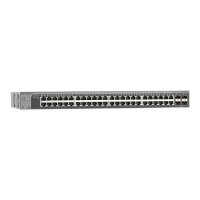
